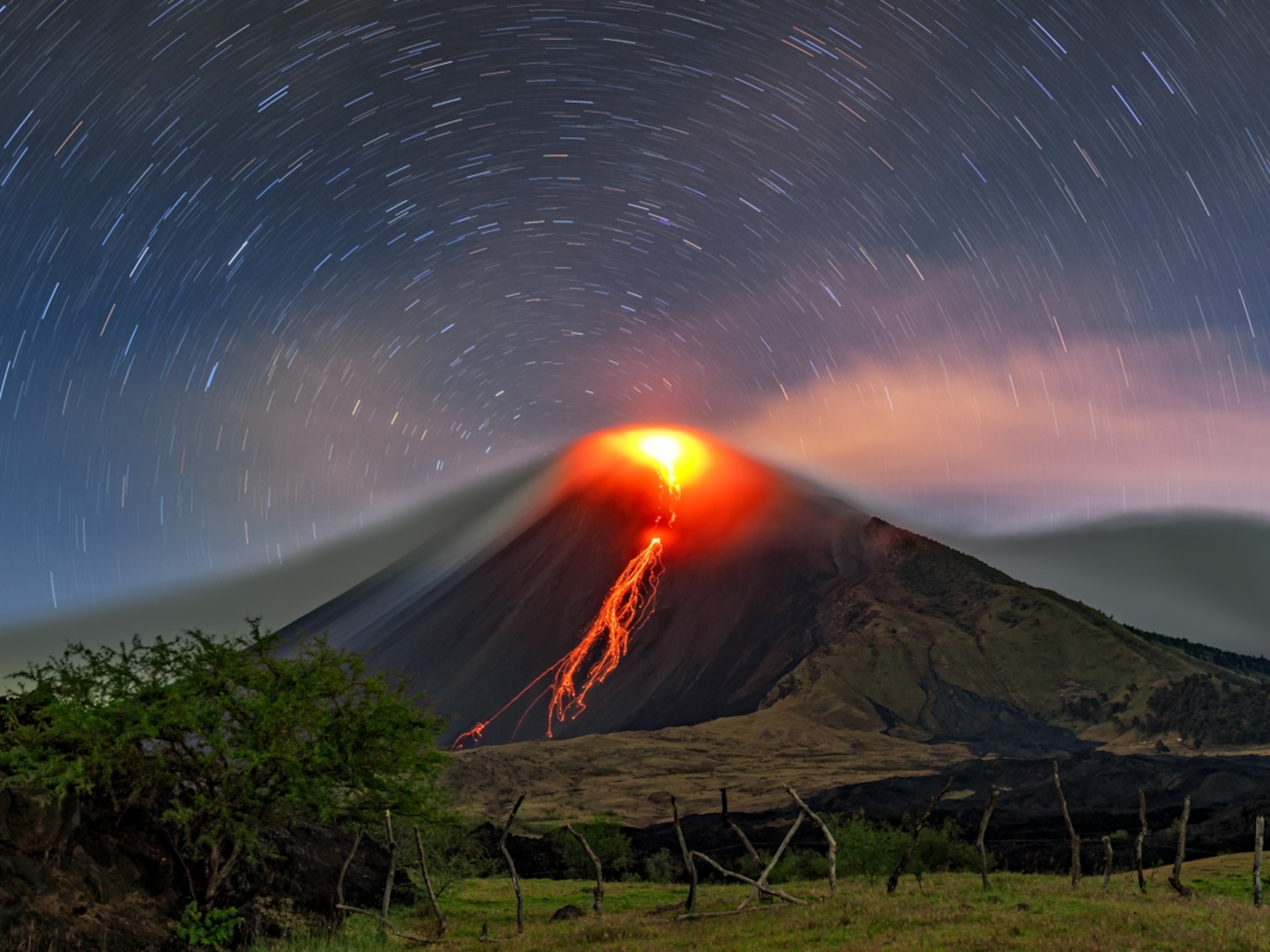
Santorini Bulges as Magma Balloons Underneath
Satellites, GPS confirm "Atlantis" island's swelling.
Santorini locals began to suspect last year that something was afoot with the volcano under their Greek island group. Wine glasses occasionally vibrated and clinked in cafes, suggesting tiny tremors, and tour guides smelled strange gasses.
Now satellite radar technology has revealed the source of the symptoms. A rush of molten rock swelled the magma chamber under the volcano by some 13 to 26 million cubic yards (10 to 20 million cubic meters)—about 15 times the volume of London's Olympic Stadium—between January 2011 and April 2012. The ballooning chamber even forced parts of the island's surface to rise upward and outward by 3 to 5.5 inches (8 to 14 centimeters).
(See volcano pictures.)
The volcano has been quiet for 60 years, and these recent events don't indicate an imminent eruption, said geologist Nomikou Paraskevi of the University of Athens.
"It is a reminder that Santorini is an active volcano. It's just that it is currently in a generally quiet state," she said.
"Since the earthquake activity and the rate of bulging have both slowed right down in the last few months, it doesn't look as though the volcano is about to start to erupt, and it is quite likely that it could remain quiet for another few years or decades. We simply don't know enough about the lifecycle of large volcanoes in between eruptions to be certain, which is why the new research we are reporting is interesting."
Paraskevi and her colleagues studied records of regional seismic activity and spotted, beginning in the January 2011 data, more than a thousand small quakes, most of them imperceptible. The team confirmed a subtle rise in Santorini's surface level with satellite radar images and GPS receivers.
The Volcano That Sunk Atlantis?
Part of the municipality of Santorini, Nea Kameni ("new burnt island") is a small uninhabited (and geologically active) island within the flooded Santorini caldera. That caldera, which forms the Santorini island group today, was formed during the volcano's last major eruption, some 3,600 years ago. That was the second-largest blast in human history and may have destroyed the Minoan civilization on nearby Crete (and possibly inspired the myth of Atlantis).
Catastrophic eruptions on Santorini, which produce mostly pumice rather than lava, appear to occur here about 20,000 years apart, said University of Oxford vulcanologist David Pyle. But during the past five centuries Santorini has had smaller eruptions, which Pyle called "not particularly dangerous at all."
The last one, in 1950, oozed enough lava to cover a few tennis courts, he said. "They might produce some ash, which could disrupt air traffic or interfere with drinking-water supplies. But most likely we're not even talking about evacuations."
Despite its relative quiet, Santorini is an ideal location to learn more about processes like the magma chamber's rapid inflation, Pyle added. It has been so well studied for centuries that the past presents a relatively clear picture for comparison—even if it raises a few tough questions.
Pyle said one puzzle is that many of the rocky remnants of past activity contain chemical clues from the point of eruption, and many suggest the system was shaken up a few months or perhaps years prior to the fireworks. "There's evidence of that for the ... large eruptions and the same sort of clues before these small eruptions," he said.
The findings suggest "that these sorts of volcanoes don't always have a large reservoir of molten rock under them waiting to erupt. That develops in pulses, and we've just seen a small [yearlong] pulse that probably delivered" an injection of molten rock equal to about 20 years' worth of "normal" upwellings, he said.
Cracking the Riddle of Dormancy
While satellite evidence of swelling magma chambers has rarely been available for an active volcano, the processes the data represent may not be all that unusual.
"My gut feeling is that some large volcanoes like Santorini and Yellowstone spend hundreds or thousands of years in a state of what you'd call dormancy," Pyle said. "But they'll often have these little restless patches, because there is molten rock moving around at depth. These types of phenomena are likely to be common, but you need the right instruments and technology to detect what are usually rather small changes in behavior."
"The tough question is that we aren't any closer to knowing if, or when, the next lava eruption might happen," he added, likening the recent swelling to someone blowing a big breath into an invisible balloon.
"We don't know how small or big the balloon is, and we don't know whether just one more breath will be enough for it to pop or not."
This Santorini-magma study was published in the September 9 issue of Nature Geoscience.





